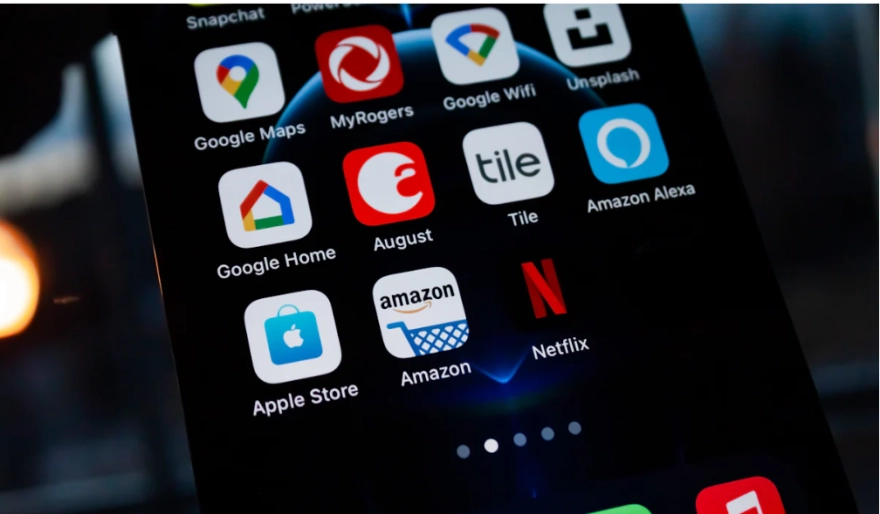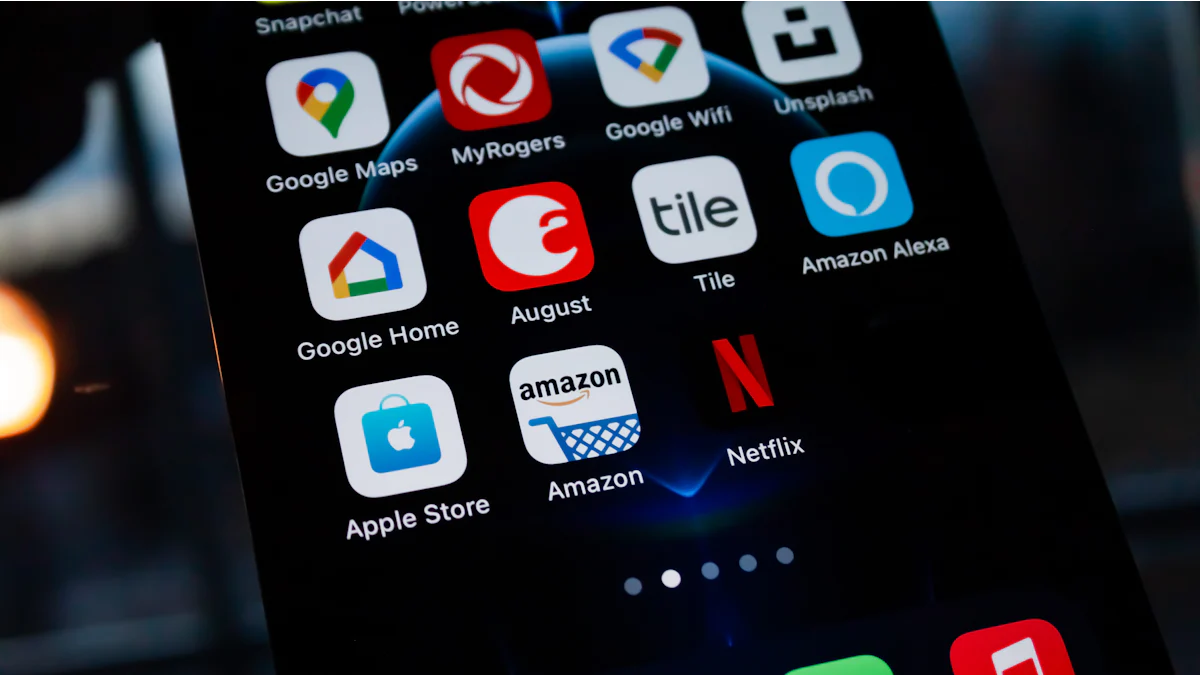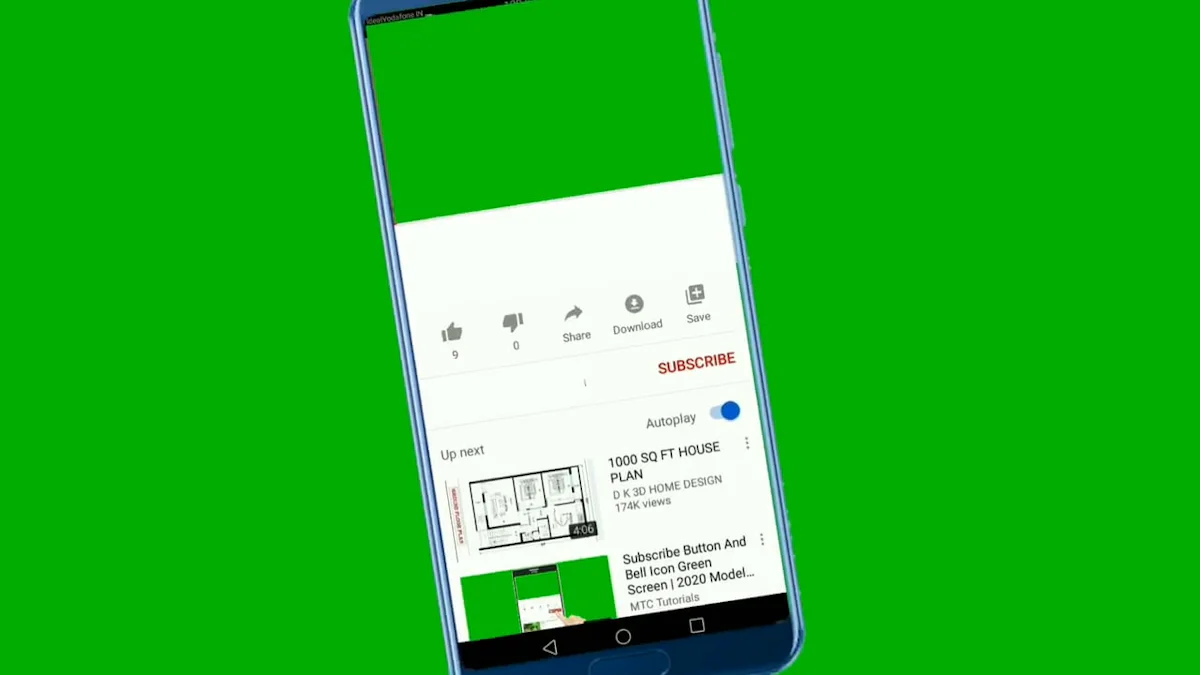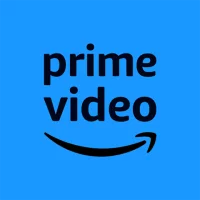Are subscription-based apps sustainable for users and developers?
36 min read Subscription-based apps encourage you to focus on retaining users and keeping them engaged. Developers often use strategies like regular updates, personalized experiences, and free trial periods to maintain user interest. For instance, offering consistent, high-quality content ensures users remain excited about your app. written by Younes sanchez October 05, 2024 12:30
Image Source: pexels
Subscription-based apps have become a dominant force in the app economy. In 2021, 86 out of the 100 highest-earning non-game apps globally adopted this model, contributing to 14% of the $131.6 billion spent on in-app purchases. This approach offers predictable revenue, which helps developers fund updates and maintain operations. Companies like Adobe Creative Cloud have shifted to subscriptions, enabling them to innovate and provide ongoing support. For users, features like trial periods and personalized content enhance value and loyalty. These factors make subscription-based apps a sustainable choice when balanced effectively.
Key Takeaways
- Apps with subscriptions give developers steady money for growth and resources.
- Frequent updates and custom features keep users interested and loyal.
- Users get premium tools and updates, making subscriptions worth it for regular use.
- It's important to manage costs; users should check subscriptions often to save money.
- Developers must balance making money and keeping users happy; good prices and support build loyalty.
Benefits of Subscription-Based Apps for Developers

Recurring Revenue
Subscription-based apps provide developers with a steady and predictable income stream. Unlike one-time purchases, subscriptions generate recurring revenue, which ensures financial stability. This model allows you to plan for long-term growth and allocate resources effectively. For example, companies using subscription models have experienced growth rates 3.7 times faster than the S&P 500 over the past 11 years. Adobe’s transition to subscriptions nearly quadrupled its annual revenue, growing from five billion to over 19 billion U.S. dollars in six years. Additionally, retaining existing customers costs significantly less than acquiring new ones, making this model more cost-efficient. By fostering ongoing relationships, you can also explore upselling and cross-selling opportunities, further boosting revenue.
User Retention and Engagement
Subscription-based apps encourage you to focus on retaining users and keeping them engaged. Developers often use strategies like regular updates, personalized experiences, and free trial periods to maintain user interest. For instance, offering consistent, high-quality content ensures users remain excited about your app. A well-designed onboarding process and trial period can showcase the app’s value, increasing the likelihood of conversion. The table below highlights some common strategies:
By implementing these strategies, you can build long-term relationships with users and reduce churn rates.
Funding for Continuous Updates
Subscription-based apps provide the financial resources needed to deliver continuous updates and improvements. With recurring revenue, you can invest in new features, bug fixes, and compatibility updates. This ensures your app remains relevant and competitive in a crowded market. Users expect regular enhancements, and meeting these expectations helps you maintain their trust and loyalty. For example, Adobe’s subscription model enabled the company to innovate consistently, keeping its software at the forefront of the industry. By reinvesting revenue into development, you can create a better experience for users while staying ahead of competitors.
Challenges of Subscription-Based Apps for Developers
Market Saturation and Competition
The growing popularity of subscription-based apps has created a highly competitive market. You face challenges like reduced market share and lower customer acquisition rates due to market saturation. With countless apps offering similar services, standing out becomes increasingly difficult. Users now have more choices than ever, which makes customer loyalty harder to maintain. Many users switch to competitors if they feel your app no longer meets their needs.
To succeed, you must consistently deliver high-quality content and innovative features. Without these, retaining users becomes nearly impossible. Rising customer expectations also demand that you provide ongoing value. A sustainable monetization strategy is essential to ensure your app remains profitable in this crowded landscape.
Profitability and Churn Rates
Profitability in subscription-based apps depends heavily on retaining subscribers. High churn rates, or the percentage of users who cancel their subscriptions, can significantly impact your revenue. On average, subscription companies experience an annual churn rate of 5-7%. Monthly subscriptions often see a churn rate of 13%, while annual subscriptions can reach as high as 50%.
A 4% monthly churn rate is considered a good benchmark, but achieving this requires constant effort. You need to engage users with regular updates and personalized experiences to keep them subscribed. High churn rates reduce the number of retained users, which limits your effective revenue. This makes it crucial to focus on strategies that minimize cancellations and maximize user satisfaction.
Meeting High User Expectations
Users of subscription-based apps expect consistent value for their money. They demand regular updates, new features, and excellent customer support. Failing to meet these expectations often leads to cancellations. You must invest in continuous improvements to keep your app relevant and competitive.
Delivering on these expectations requires significant resources. You need a dedicated team to develop updates, fix bugs, and respond to user feedback. Balancing these demands while maintaining profitability can be challenging. However, meeting high user expectations is key to building trust and ensuring long-term success.
Benefits of Subscription-Based Apps for Users
Regular Updates and Compatibility
Subscription-based apps ensure you always have access to the latest updates and features. Developers use the recurring revenue from subscriptions to fund regular improvements. These updates often include bug fixes, performance enhancements, and compatibility with new devices or operating systems. For example, when your phone updates to a new version of its operating system, subscription-based apps are more likely to remain functional and optimized. This ensures a seamless experience without interruptions.
By subscribing, you also benefit from apps that stay relevant in a fast-changing tech landscape. Developers prioritize keeping their apps competitive, which means you receive cutting-edge features and tools. This level of commitment is harder to achieve with one-time purchase apps, where updates may be infrequent or nonexistent.
Access to Premium Features
Subscription-based apps give you access to exclusive content and premium features that enhance your experience. These apps charge a recurring fee, allowing developers to maintain operations and continuously improve their offerings. Unlike free or one-time purchase apps, subscription models encourage developers to deliver ongoing value.
For instance:
- You can enjoy advanced tools or features that are unavailable in free versions.
- Subscriptions often include personalized content or services tailored to your needs.
- Premium features, such as ad-free experiences or higher storage limits, improve usability.
This model fosters higher engagement and loyalty because you consistently receive value for your investment. Developers also benefit from predictable revenue, which motivates them to innovate and meet your expectations.
Cost-Effectiveness for Frequent Users
If you use an app regularly, a subscription can save you money in the long run. Instead of paying for individual features or upgrades, you pay a single recurring fee for full access. This approach is especially beneficial for apps you rely on daily, such as productivity tools, fitness trackers, or streaming services.
For example, a one-time purchase app might charge extra for each new feature or update. In contrast, subscription-based apps bundle these costs into a single payment, making it easier to budget. Frequent users often find this model more affordable because it eliminates the need for multiple purchases.
Subscriptions also provide flexibility. Many apps offer monthly or annual plans, allowing you to choose what works best for your budget. This adaptability ensures you get the most value without overspending.
Challenges of Subscription-Based Apps for Users
Rising Cumulative Costs
Subscription-based apps can become expensive over time. You might start with one or two subscriptions, but the costs add up as you add more services. Many users underestimate how much they spend. A 2022 study revealed that consumers believed they spent $86 monthly on subscriptions, but the actual amount was closer to $219. This gap highlights how easy it is to lose track of spending.
The cumulative cost becomes even more noticeable when prices increase. Popular services often raise their fees, which puts additional pressure on your budget. If you rely on multiple apps, these increases can make subscriptions feel less affordable. Managing these rising costs requires careful budgeting and regular reviews of your subscriptions.
Subscription Fatigue
The growing number of subscription-based apps has led to what many call "subscription fatigue." You might feel overwhelmed by the sheer number of services available. This phenomenon, known as subscription sprawl, makes it harder to manage your subscriptions.
Several factors contribute to this fatigue:
- Rising prices from major services create financial strain.
- A disconnect between the cost of subscriptions and the value you receive can leave you dissatisfied.
- The complexity of managing multiple subscriptions adds to the frustration.
When you experience subscription fatigue, you may cancel services or avoid new ones altogether. This trend shows how important it is for apps to deliver clear value and simplify their offerings.
Lack of Ownership
With subscription-based apps, you never truly own the product. Instead, you pay for access. If you cancel your subscription, you lose access to all features and content. This lack of ownership can feel limiting, especially if you rely on the app for important tasks.
For example, a one-time purchase app allows you to use the product indefinitely. In contrast, subscriptions require ongoing payments to maintain access. This model works well for frequent users, but it may not suit everyone. If you prefer long-term access without recurring costs, the lack of ownership in subscriptions can be a significant drawback.
Alternative Monetization Models
Freemium Models
Freemium apps offer a basic version of their service for free while charging for premium features. This model allows you to try the app without any upfront cost. If you find value in the app, you can choose to pay for additional features or services. For example, many productivity apps provide free tools but charge for advanced options like cloud storage or collaboration features.
Freemium models work well because they attract a large user base. You get the chance to explore the app before committing financially. Developers benefit by converting free users into paying customers. However, some freemium apps limit their free features too much, which can frustrate users. When done right, this model balances accessibility with profitability.
One-Time Purchase Apps
One-time purchase apps require you to pay a single fee to access the full product. Once you buy the app, you own it indefinitely. This model appeals to users who prefer not to deal with recurring payments. For example, many mobile games and offline tools use this approach.
One-time purchases give you a sense of ownership. You don’t have to worry about losing access if you stop paying. Developers, however, face challenges with this model. They must rely on new sales for revenue, which can make it harder to fund updates. Despite this, one-time purchase apps remain popular for their simplicity and transparency.
Ad-Supported Apps
Ad-supported apps generate revenue by displaying advertisements. You can use these apps for free, but you may encounter ads during your experience. For instance, many streaming services and mobile games rely on this model.
This approach benefits you by providing free access to apps. Developers earn money through ad impressions or clicks, which helps them maintain their services. However, frequent ads can disrupt your experience. Some apps offer an option to remove ads through a one-time payment or subscription. Ad-supported apps work best when they balance ad frequency with user satisfaction.
Future of Subscription-Based Apps

Adapting to Evolving User Preferences
As technology evolves, so do user expectations for subscription-based apps. To stay competitive, developers must adapt to these changing preferences. Trends like localization and organic growth are shaping the future of app development. Localization involves tailoring pricing, packaging, and user experiences to fit regional needs. Organic growth focuses on sustainable acquisition channels, such as SEO and social platforms, to attract users without heavy advertising costs.
The table below highlights key trends influencing user preferences:
By focusing on these trends, you can ensure your app remains relevant and appealing to a diverse audience.
Innovations in Pricing Models
Innovative pricing models are helping developers address user concerns about affordability. Value-based pricing aligns the cost of an app with the value it delivers, ensuring users feel they are getting their money’s worth. Competitive pricing analysis helps developers understand market dynamics and position their apps effectively.
Other strategies include:
- Cost-plus pricing, which adds a markup to production costs.
- Penetration pricing, which offers low initial prices to attract users.
- Dynamic pricing, which adjusts costs based on demand and user behavior.
Tools like pricing software and analytics provide insights into customer behavior and price elasticity. Developers can also experiment with different pricing scenarios to measure their impact on sales and satisfaction. Offering flexible solutions, such as risk-sharing agreements or tiered subscriptions, can further enhance affordability and trust.
Balancing Profitability and User Satisfaction
Balancing profitability with user satisfaction is crucial for the long-term success of subscription-based apps. You can achieve this by offering value-driven pricing with multiple subscription tiers to cater to diverse needs. Providing a free trial period allows users to experience the app’s value before committing.
To maintain engagement, regularly update content and personalize user experiences. Upselling and cross-selling opportunities can increase revenue from existing subscribers. Excellent customer support also plays a vital role in reducing churn and building loyalty.
A step-by-step approach to balancing these priorities includes:
- Offer value-driven pricing with different tiers.
- Provide a compelling free trial period.
- Nurture engagement and reduce churn.
- Leverage upselling and cross-selling opportunities.
- Nail your onboarding experience.
By implementing these strategies, you can create a sustainable model that benefits both users and developers.
Subscription-based apps offer you significant benefits, such as regular updates and access to premium features, while providing developers with predictable revenue streams. Engagement for these apps has grown by 32% in the past year, and their revenue has increased by 95% since 2017. This growth enables developers to innovate and deliver consistent value, fostering user loyalty. However, challenges like subscription fatigue and market saturation require careful attention.
As the app economy evolves, alternative strategies like micro-subscriptions and personalized offerings are gaining traction. These approaches provide flexibility and cater to diverse user needs. While subscription-based apps remain dominant, their sustainability depends on balancing profitability with user satisfaction.
FAQ
What makes subscription-based apps different from one-time purchase apps?
Subscription-based apps charge recurring fees, giving you access to regular updates and premium features. One-time purchase apps require a single payment, granting indefinite access. Subscriptions focus on continuous improvement, while one-time purchases often lack frequent updates.
How can you manage subscription fatigue?
To manage subscription fatigue, review your subscriptions regularly. Cancel services you no longer use. Use budgeting tools to track spending. Prioritize apps that deliver the most value. This approach helps you avoid unnecessary costs and stay organized.
Are subscription-based apps worth it for occasional users?
If you use an app occasionally, subscriptions may not be cost-effective. Consider alternatives like one-time purchase apps or freemium models. These options let you pay only for what you need without committing to recurring payments.
Why do developers prefer subscription models?
Developers prefer subscriptions because they provide predictable revenue. This allows them to fund updates, improve features, and maintain operations. Subscriptions also encourage user retention, which reduces the cost of acquiring new customers.
Can you switch between subscription tiers?
Most subscription-based apps let you switch between tiers. This flexibility allows you to adjust your plan based on your needs and budget. Check the app’s terms to understand how upgrades or downgrades work.



















